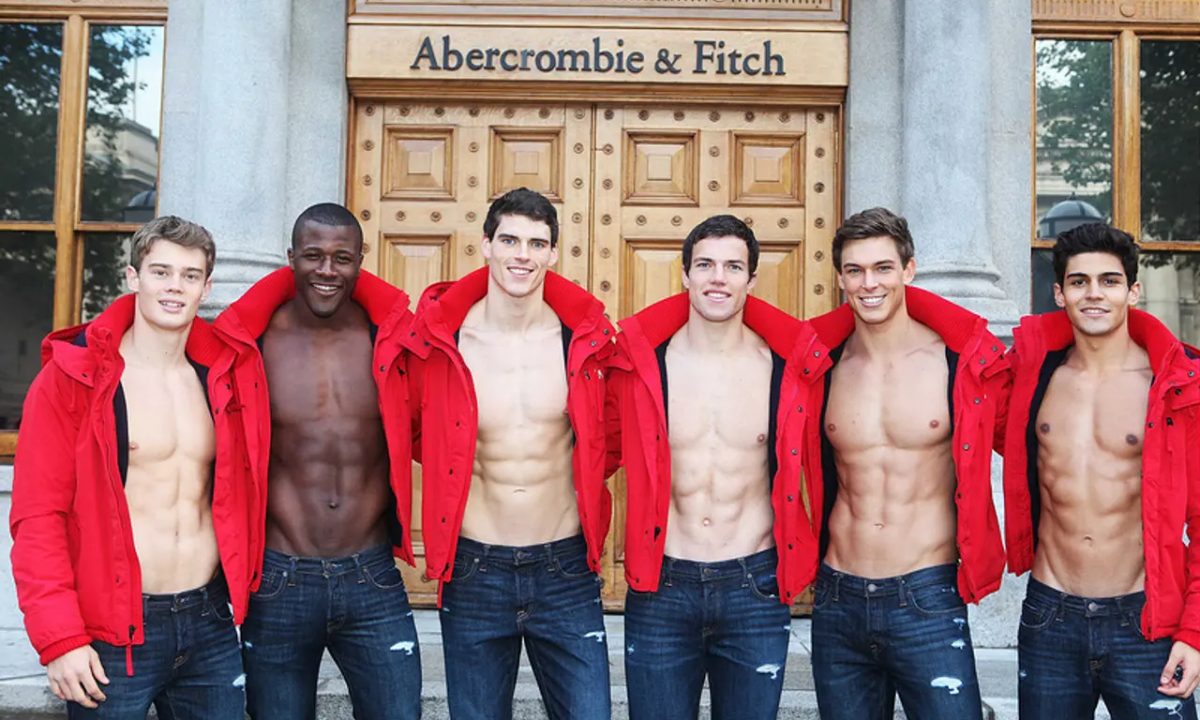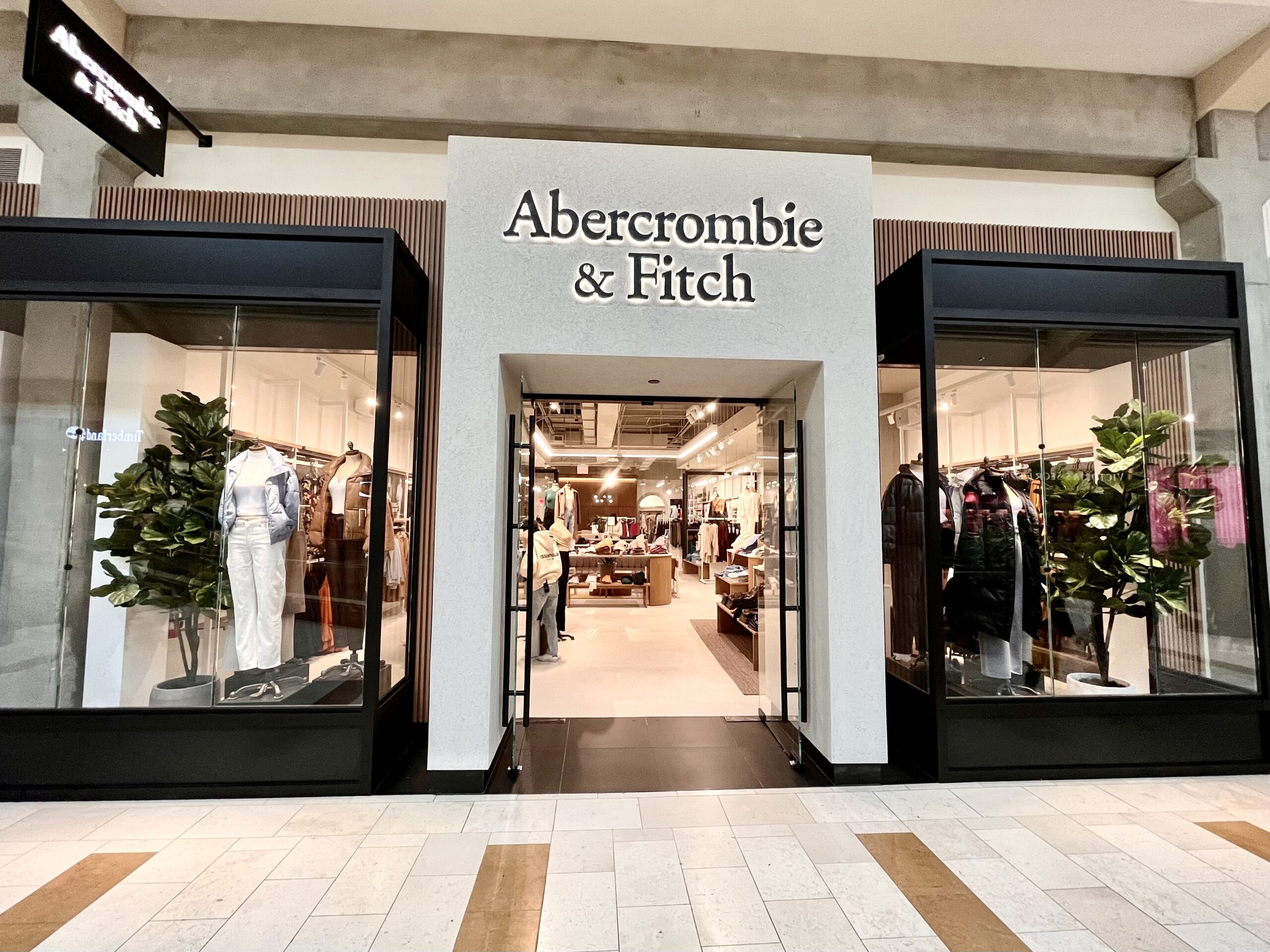Abercrombie And Fitch - A Brand's Evolving Narrative
You know, sometimes, when you set out to truly grasp a brand, it's almost like trying to find a hidden message. It's a bit like when you encounter a space that simply won't let you see the full picture, you know? There might be a description you're hoping to find, but for some reason, the place just isn't allowing it to be shown.
This situation, actually, mirrors the journey of a name like Abercrombie and Fitch in a way. For many, it carries a certain feeling, a specific memory, or perhaps just a general idea. Yet, getting a complete, clear sense of its entire story can feel like that very challenge, where some parts remain just out of reach, or perhaps, simply unrevealed.
So, we're going to explore what we can about this particular name, digging into its past moments, its shifting presence, and where it appears to be heading. It's a look at a brand that has, well, certainly made an impression on people, and continues to shape itself, in some respects, as time moves along.
Table of Contents
- What is the Story Behind Abercrombie and Fitch?
- How Did Abercrombie and Fitch Begin Its Existence?
- Has Abercrombie and Fitch Changed Its Direction?
- What Defined the Look of Abercrombie and Fitch?
- Why Did Abercrombie and Fitch Face Criticism?
- How Did People Talk About Abercrombie and Fitch?
- What's Next for Abercrombie and Fitch?
- Can Abercrombie and Fitch Find a New Identity?
What is the Story Behind Abercrombie and Fitch?
The name Abercrombie and Fitch, you know, has quite a long tale attached to it. It didn't start out as the casual clothing store many people recognize today. In its earliest form, this company was, in fact, a supplier of goods for outdoor activities. Think about folks who loved to fish, or perhaps hunt, or even just spend time in nature's open spaces. That was the crowd it aimed to serve, offering items that were, well, pretty much designed for those sorts of pursuits. It was a place where you could get what you needed for a real adventure, basically.
David Abercrombie, a person with a knack for surveying and a love for the outdoors, established the business in the late 1800s. He had a vision, it seems, for a place that truly understood the needs of someone heading into the wilderness. This early iteration of Abercrombie and Fitch was known for its reliable gear, its practical clothing, and its tools that stood up to tough conditions. It was a specialist store, focusing on quality items for a very specific kind of customer, you see.
Later on, a lawyer named Ezra Fitch, who was a regular shopper and admirer of the company's offerings, decided to join the business. His involvement brought about a change in the company's direction, leading to its incorporation under the familiar name. This partnership, in some respects, marked a turning point, expanding the scope of what Abercrombie and Fitch offered, even if it still held onto its outdoor roots for a good while. It's really quite interesting how these things come about.
How Did Abercrombie and Fitch Begin Its Existence?
The initial concept for Abercrombie and Fitch was pretty straightforward: provide good quality items for people who enjoyed the wild. This meant offering things like tents, sleeping bags, specialized clothing, and various tools that adventurers would find useful. It was a store built on the idea of practical utility and a connection to the natural world. So, it was a very different kind of place from what it would become, you know, much later.
Its first customers included some rather well-known figures, people who were quite famous for their expeditions or their love of the great outdoors. This really helped to build a certain reputation for Abercrombie and Fitch, giving it a bit of an exclusive feel, even then. They were seen as the place to go for serious outdoor pursuits, which, honestly, is a far cry from the mall experience many people associate with the name now.
The company even published catalogs that were, in their own way, pretty extensive. These catalogs showcased a wide array of items, from hunting rifles to fishing rods, and they were quite a resource for people planning their next outdoor escapade. It was a time when the name Abercrombie and Fitch truly stood for rugged adventure and a certain kind of hardy spirit, you could say. It was a foundational period, basically, for everything that came after.
Has Abercrombie and Fitch Changed Its Direction?
Over the years, Abercrombie and Fitch underwent some pretty significant transformations. The focus gradually shifted away from purely outdoor gear and more towards a different kind of product. This change didn't happen overnight, but it certainly marked a departure from its original purpose. It moved, you know, from supplying explorers to dressing a different sort of customer, one who was perhaps more interested in everyday fashion.
By the late 20th century, the company had taken on a very distinct identity, particularly appealing to a younger demographic. The stores themselves became a big part of the experience, with a particular atmosphere that was, well, pretty memorable for many. Loud music, dim lighting, and a specific scent were all part of the package. It was, in a way, a complete sensory presentation, trying to create a particular feeling for anyone who walked in, you see.
This period saw Abercrombie and Fitch become a very recognizable brand, with its casual clothing becoming a sort of uniform for many young people. The designs were often simple, featuring the brand's logo prominently, and they were associated with a certain look and lifestyle. It was a time when the company really carved out a niche for itself in the retail world, even if it was a very different niche from its beginnings, actually.
What Defined the Look of Abercrombie and Fitch?
The style that came to define Abercrombie and Fitch for a long time was, quite simply, casual comfort with a preppy twist. Think about soft, worn-in t-shirts, comfortable hoodies, and denim that felt just right. The color palettes tended to be muted, with lots of neutrals and earthy tones, though pops of brighter shades would appear sometimes. It was a look that aimed for an effortless, relaxed vibe, you know, something easy to wear every day.
A big part of this look was the branding itself. The Abercrombie and Fitch name, or its moose emblem, often appeared in large letters across the chest of shirts or on the legs of sweatpants. This made the clothing instantly recognizable and, for many, a statement about belonging to a certain group or aspiring to a particular kind of image. It was, in some respects, a very visible form of identity, basically.
The marketing efforts really reinforced this image. Advertisements often showed young, attractive people in settings that suggested a life of leisure, popularity, and a certain kind of carefree spirit. This visual storytelling played a significant role in shaping how people perceived the Abercrombie and Fitch brand and what it represented. It was a very deliberate creation of an aspirational world, you could say, that the clothes were meant to help you step into.
Why Did Abercrombie and Fitch Face Criticism?
As Abercrombie and Fitch grew, it also started to attract a fair amount of public scrutiny. Some of the choices made regarding its brand image and its business practices began to draw strong negative reactions. This wasn't just about the clothes themselves, but more about the messages the company seemed to be sending, or perhaps, the attitudes it appeared to promote. It was a situation where the brand's actions started to get a lot of attention, and not always the good kind, you know?
One area of concern for many people was the company's approach to who it wanted as its customers. There were statements and policies that seemed to suggest a preference for a very specific type of person, which left many others feeling excluded or, honestly, just unwelcome. This kind of perceived exclusivity, in some respects, really started to rub a lot of people the wrong way, leading to quite a bit of public outcry, actually.
There were also issues related to employment practices and certain comments made by company leaders that sparked widespread debate. These situations led to discussions about diversity, inclusion, and the responsibility of large companies to foster a welcoming environment for everyone. It was a time when Abercrombie and Fitch found itself at the center of some rather intense conversations about its values, and what it truly stood for, you see.
How Did People Talk About Abercrombie and Fitch?
The conversations surrounding Abercrombie and Fitch became, at one point, pretty heated. People talked about its marketing as being too focused on a single, narrow idea of beauty, and its general attitude as being, well, a bit out of touch with the broader public. There was a sense among many that the brand was creating divisions, rather than being something for everyone, which, honestly, is something a lot of people expect from a clothing company.
These discussions often played out in the media, on social platforms, and among everyday consumers. People shared their personal experiences, both positive and negative, creating a very public record of how the brand was perceived. It was a period where the reputation of Abercrombie and Fitch became a really big topic, and the brand's actions were scrutinized very closely, you know?
The outcome of these conversations was a significant shift in how the public viewed the company. What was once seen as cool or aspirational by some started to be seen as exclusionary or problematic by others. This change in public opinion meant that Abercrombie and Fitch had to really take a hard look at itself and consider how it wanted to move forward, basically, in a world that was becoming more aware of social issues.
What's Next for Abercrombie and Fitch?
In recent times, Abercrombie and Fitch has been working to change its image and its overall approach. There's been a clear effort to move away from the controversial aspects of its past and to present a more inclusive and welcoming face to the world. This means rethinking everything from how products are designed to how they are presented in stores and in advertisements. It's a big undertaking, you know, to really reshape a brand's core identity.
The company has introduced new product lines and has broadened its appeal to a wider range of ages and body types. The focus is now much more on offering comfortable, stylish clothing that feels good to wear, without the overt exclusivity that was once part of its identity. This shift is, in some respects, a response to changing consumer expectations and a desire to connect with a broader audience, actually.
You can see this change in the way their stores look now, and in the people they feature in their promotions. The atmosphere is generally brighter, more open, and the messaging is about individuality and self-expression, rather than fitting into a single mold. It's a conscious move to create a more positive and accessible experience for everyone who interacts with the Abercrombie and Fitch name, you see.
Can Abercrombie and Fitch Find a New Identity?
The question of whether Abercrombie and Fitch

Abercrombie and Fitch Logo, symbol, meaning, history, PNG, brand

NETFLIX ANNOUNCES NEW ABERCROMBIE & FITCH DOCUMENTARY | FIB

Abercrombie & Fitch Opens Rebranded Store at Bellevue Square - Downtown